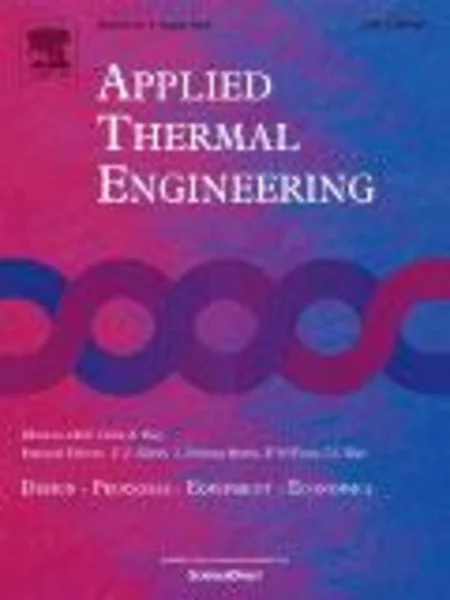-
film boiling collapse in solid spheres immersed in a sub-cooled liquid
جزئیات بیشتر مقاله- تاریخ ارائه: 1392/01/01
- تاریخ انتشار در تی پی بین: 1392/01/01
- تعداد بازدید: 506
- تعداد پرسش و پاسخ ها: 0
- شماره تماس دبیرخانه رویداد: -
the present study examines the thermal reaction phenomenon associated with the penetration of a hot metal solid sphere into a cold liquid reservoir. the effect of various parameters on the sudden collapse of the vapor film around the sphere is studied. a pre-heated metal sphere, made of aluminum, copper, or steel having different dimensions and a variable initial temperature, has been immersed in a varied degree of sub-cooled water. the evolution of the time-dependent temperature of the solid body has been recorded. simultaneously, the film collapsing process has been recorded with a video camera. it is observed that above a certain sub-cooling degree, film collapsing noise (vapor explosion) and higher heat transfer rates are involved. the temperature, at which the film collapses, the quenching temperature, seems to be dependent on the sub-cooling degree, on the sphere material, and on the sphere size. we found that the steam explosion is followed by an apparent “golf-ball” like boiling period. this occurs between the transition and the film boiling regimes. during the “golf-ball” boiling period, the sphere surface appears to be covered by a large number of concaved cells having a characteristic dimension of about 3 mm. in order to explore the possible effect of the hot surface curvature of the immersed body, generalization of the pool boiling hydrodynamic theory for mhf conditions has been developed for arbitrarily curved heater geometries. the mhf is related to the mass rate of the vapor leaving the vapor film under these conditions. an account for the excess pressure acting on the base of the bubble arises from the excess pressure of the vapor film, due its curvature, has been added. the applicability of this model is presented for a horizontal plate, horizontal cylinders, and spheres. the model seems to fit well available experimental data for the different systems.
حوزه های تحت پوشش رویداد
مقالات جدیدترین رویدادها
-
استفاده از تحلیل اهمیت-عملکرد در ارائه الگوی مدیریت خلاقیت سازمانی و ارائه راهکار جهت بهبود
-
بررسی تاثیر ارزش وجوه نقد مازاد بر ساختار سرمایه شرکت های پذیرفته شده در بورس اوراق بهادار تهران
-
بررسی تأثیر سطح افشای ریسک بر قرارداد بدهی شرکت های پذیرفته شده در بورس اوراق بهادار تهران
-
بررسی تأثیر رتبه بندی اعتباری مبتنی بر مدل امتیاز بازار نوظهور بر نقد شوندگی سهام با تأکید بر خصوصی سازی شرکت ها
-
تأثیر آمیخته بازاریابی پوشاک ایرانی بر تصویر ذهنی مشتری پوشاک ایرانی (هاکوپیان)
-
بررسی و مقایسه خصوصیات مکانیکی استفاده از الیاف فولادی با نسبت طول به قطر متفاوت در بتن
-
رویکردی جامع به معماری پایدار در ابعاد اکولوژی، انرژی و اقلیم
-
تاثیر جوانه زایی بر خواص مکانیکی و ریزساختار چدن نشکن ریختگی جداره نازک دارای آلومینیوم
-
برداشت و تفسیر کیفی داده های مغناطیس سنجی، جهت اکتشاف ذخایر آهن در منطقه کلاه ابوذر
-
pile spacing effects under lateral loading
مقالات جدیدترین ژورنال ها
-
مدیریت و بررسی افسردگی دانش آموزان دختر مقطع متوسطه دوم در دروان کرونا در شهرستان دزفول
-
مدیریت و بررسی خرد سیاسی در اندیشه ی فردوسی در ادب ایران
-
واکاوی و مدیریت توصیفی قلمدان(جاکلیدی)ضریح در موزه آستان قدس رضوی
-
بررسی تاثیر خلاقیت، دانش و انگیزه کارکنان بر پیشنهادات نوآورانه کارکنان ( مورد مطالعه: هتل های 3 و 4 ستاره استان کرمان)
-
بررسی تاثیر کیفیت سیستم های اطلاعاتی بر تصمیم گیری موفق در شرکتهای تولیدی استان اصفهان (مورد مطالعه: مدیران شرکتهای تولیدی استان اصفهان)
-
ارائه مدل عملیاتی مؤثر برجذب سرمایه گذاری
-
بررسی جرمشناختی جرایم مالی کارکنان دولت (رویکرد کلان)
-
تأثیر قواعد انتظامی در تعیین حقوق قابل اعمال بر روابط موجود در اعتبار اسنادی
-
واکاوی اسقاط خیار غَبن و تأثیر آن در سقوط میزان غَبن فاحش و اَفحَش
-
ویژگی مواد برای سازه های ساختمانی پرینت سه بعدی با چاپ افزودنی




سوال خود را در مورد این مقاله مطرح نمایید :